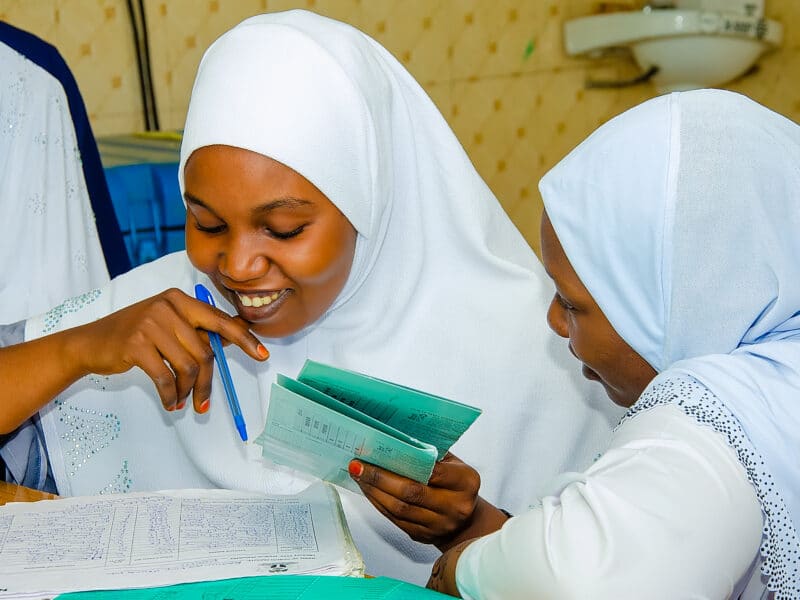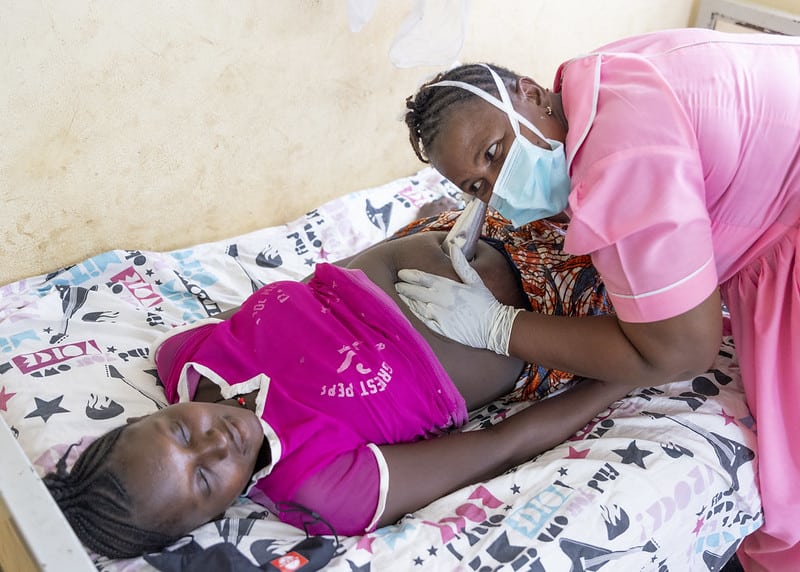With the World Health Organization (WHO) announcing last week its recommendation to roll out a much-need malaria vaccine to children under two in sub-Saharan Africa, social and behavior change experts are already strategizing about how to communicate the benefits of the vaccine to caregivers and health care workers.
The key to success will be helping caregivers understand the reasons why they should vaccinate their infants and toddlers, even though the four-dose vaccine, known as RTS,S, has shown to be 39 percent effective at preventing malaria in pilot testing. Since the vaccine is only being used in children under two, they emphasize how important it is for families to continue existing malaria prevention measures, such as sleeping under insecticide-treated bed nets.
Experts say they want to make sure that the benefits are clearly conveyed, but they also want to be careful not to over-promise on the value of the vaccine, which could interfere with successful prevention measures instituted in many countries across Africa. WHO states that where the vaccine implementation trials have been conducted, there has not been a decrease in the use of insecticide-treated nets, the uptake of other childhood vaccinations or care-seeking for fever. But it is important to keep up the promotion of these life-saving behaviors.
“We need to get ahead of this and ask ourselves will a false sense of security [from the vaccine] reduce use of malaria prevention practices or prompt care-seeking for fever,” says Gabrielle Hunter, malaria technical advisor at the Johns Hopkins Center for Communication Programs. “We believe it’s important to communicate clearly why these behaviors need to continue in addition to the RTS,S vaccine.”
Hunter is co-chair of the RBM Partnership to End Malaria Social and Behavior Change Working Group, which met last month to hear updates about the vaccine and begin discussions about what social and behavior change implementers might consider in preparing for the ultimate deployment of the vaccine. Even with the Oct. 6 recommendation from WHO, the vaccine would need to be approved for funding by the global health community before broad rollout. Officials would also need to determine if, where and how to roll out the vaccine in their countries. It is not clear how long these processes could take.
Still, WHO approval of the vaccine is a landmark for malaria, for which there has never been a vaccine. Malaria kills about half a million people each year, nearly all of them in sub-Saharan Africa — among them 260,000 children under five. The vaccine works against Plasmodium falciparum, the deadliest of five malaria pathogens and the most prevalent in Africa. WHO predicts that the vaccine can save tens of thousands of lives.
Hunter advises that all vaccine rollout plans across Africa include social and behavior change elements since strategic communication could mean the difference in successfully deploying the doses and ensuring the upkeep of essential malaria prevention and care-seeking behaviors.
Ensuring uptake of the vaccine may not be easy. The four-dose regimen starts when babies are small and receiving other childhood immunizations – three doses are given between approximately five and 17 months – with the fourth to be given around age two. Four doses are needed to maximize the vaccine’s protection, and social and behavior change experts say it is key for people to remember and access to all four.
Given the large amount of vaccine hesitancy that has been seen around the world during the roll out of the COVID-19 vaccine, Hunter says it is important to be prepared to provide accurate information about safety, efficacy and access, to make it as easy as possible to get children immunized. In pilot testing in Malawi, Kenya and Ghana, researchers encountered a lot of vaccine acceptance, but concerns about misinformation and rumors must be anticipated and addressed. She points to rumor management systems developed and deployed by the CCP-led Breakthrough ACTION project over the past 18 months.
While pilot testing has shown that RTS,S is safe and can be effectively deployed in remote and rural settings, Hunter wants to make sure that messages don’t make the RTS,S vaccine sound like a “silver bullet,” given its moderate efficacy and given that it is only given to young children. Children with fevers still need to be quickly tested for malaria and adults are also still susceptible to the mosquito-borne disease.
“It can prevent some infection, but it will be essential that households continue to maintain their efforts to prevent and manage malaria,” Hunter says. “The RTS,S vaccine is an important new tool to help us combat this parasite from a different angle and in combination with the other effective tools currently in use: insecticide-treated bed nets, malaria prophylaxis for children and pregnant women, indoor residual spraying with insecticides, and prompt and appropriate testing and treatment of malaria.”
According to Hunter, among the considerations for developing strategies and partnerships to support the future implementation of RTS,S are:
- Understanding the primary and secondary audience and factors that influence vaccine uptake through a situational analysis
- Deciding what will be important to communicate about the vaccine and how to best frame and position messages
- Anticipating challenges such as barriers, myths, misconceptions and rumor management
- Coordinating harmonized implementation through collaboration and incorporating new vaccine messages within existing malaria social and behavior change interventions
- Understanding who will be carrying out vaccine communication and ensuring that it is funded and included in national malaria strategic plans and social and behavior change strategies





